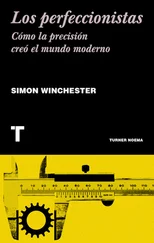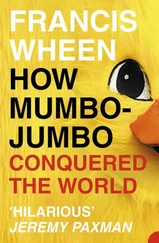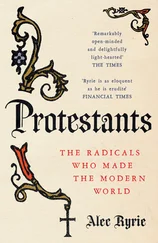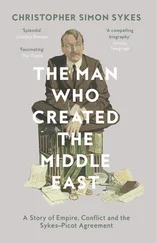He then took the pieces from me and promptly placed them back on the table, one of them on top of the other. Now, he said, pick up the top one. Just the top one. And so, with one hand, I did as I was told—except that upon my picking up the topmost piece, the other one came along with it.
My father grinned. Pull them apart, he said. I grasped the lower piece and pulled. It would not budge. Harder, he said. I tried again. Nothing. No movement at all. The two rectangular steel tiles appeared to be stuck fast, as if they were glued or welded or had become one—for I could no longer see a line where one tile ended and the other began. It seemed as though one piece of steel had quite simply melted itself into the structure of the other. I tried again, and again.
By now I was perspiring from the effort, and my mother, back from the kitchen, was getting impatient, and so my father set his pipe aside and took off his jacket and began to dish out the food. The tiles were beside his water glass, symbols of my muscular impoverishment, my defeat. Could I have another try? I asked at dinner. No need, he said, and he picked them up and with a flick of his wrist simply slid one off the other, sideways. They came apart instantly, with ease and grace. I was openmouthed at something that, viewed from a schoolboy’s perspective, seemed much like magic.
No magic, my father said. All six of the sides, he explained, are just perfectly, impeccably, exactly flat. They had been machined with such precision that there were no asperities whatsoever on their surfaces that might allow air to get between and form a point of weakness. They were so perfectly flat that the molecules of their faces bonded with one another when they were joined together, and it became well-nigh impossible to break them apart from one another, though no one knows exactly why. They could only be slid apart; that was the only way. There was a word for this: wringing .
My father started to talk animatedly, excitedly, with a passionate intensity that I always liked. Metal tiles like these, he said, and with a very evident pride, are probably the most precise things that are ever made. They are called gauge blocks, or Jo blocks, after the man who invented them, Carl Edvard Johansson, and they are used for measuring things to the most extreme of tolerances—and the people who produce them work at the very summit of mechanical engineering. These are precious things, and I wanted you to see them, since they are so important to my life.
And with that said, he fell quiet, carefully put the gauge blocks back in their velvet-lined wooden box, finished his dinner, lit his pipe once more, and fell asleep by the fire.
MY FATHER WAS for all his working life a precision engineer. In the closing years of his career, he designed and made minute electric motors for the guidance systems of torpedoes. Most of this work was secret, but once in a while he would smuggle me into one of his factories and I would gaze in either admiration or puzzlement at machines that cut and notched the teeth for tiny brass gearwheels, or that polished steel spindles that seemed no thicker than a human hair, or that wound copper coils around magnets that seemed no bigger than the head of a pipe smoker’s vesta.
I remember with great fondness spending time with one of my father’s favored workers, an elderly man in a brown lab coat who, like my father, clasped a pipe between his teeth, leaving it unlit all the time he worked. He wore a permanently incised frown as he sat before the business end of a special lathe—German, my father said; very expensive—watching the cutting edge of a notching tool as it whirled at invisible speed, cooled by a constant stream of a cream-like oil-and-water mixture. The machine hunted and pecked at a small brass dowel, skimming as it did so microscopic coils of yellow metal from its edges as the rod was slowly rotated. I watched intently as, by some curiously magical process, an array of newly cut tiny teeth steadily appeared incised into the metal’s outer margins.
The machine stopped for a moment; there was a sudden silence—and then, as I squinted into the moving mass of confusion around the workpiece, a gathering of separate and more delicate tungsten carbide tools moved into view and were promptly engaged, and the spindles began to turn and cut, such that the teeth that had so far been created were now being shaped and curved and notched and chamfered, the machine’s magnifying glass showing just how the patterns of their edges evolved as they passed beneath the blades, until, with a whisper of disengagement, the spinning stopped, the dowel was sliced as a side of ham might be, the clamp was released, and out of a filter lifted from the cream-oil bath rose a dripping confection of impossibly shiny finished gearwheels, maybe twenty of them, each no more than a millimeter thick and perhaps a centimeter in diameter.
They were all flipped by an unseen lever out of the lathe and onto a tray, where they would lie ready to be slipped onto spindles and then attached in mysterious fashion to the motors that turned a fin here or varied the pitch of a screw there, with the gyroscopically ordered intention of keeping a high-explosive submarine weapon running straight and true toward its enemy target through the unpredictable movements of a cold and heaving sea.
Except that, in this case, the elderly craftsman decided that the Royal Navy could easily spare one from this fresh batch of wheels. He took a pair of steel needle-nose tweezers and picked a sample out of the creamy bath, washed it under a gush of clear water, and handed it to me with an expression of pride and triumph. He sat back, smiled broadly at a job well done, and lit a satisfying pipe. The tiny gearwheel was a gift, my father would say, a reminder of your visit. As precise a gearwheel as you’ll ever see.
JUST LIKE HIS star employee, my father took singular pride in his profession. He regarded as profound and significant and worthy the business of turning shapeless slugs of hard metal into objects of beauty and utility, each of them finely turned and neatly finished and fitted for purposes of all imaginable kinds, prosaic and exotic—for as well as weaponry, my father’s plants built devices that went into motorcars and heating fans and down mineshafts; motors that cut diamonds and crushed coffee beans and sat deep inside microscopes, barographs, cameras, and clocks. Not watches, he said ruefully, but table clocks and ships’ chronometers and long-case grandfather clocks, where his gearwheels kept patient time to the phases of the moon and displayed it on the clock dials high up in a thousand hallways.
He would sometimes bring home pieces even more elaborate than but perhaps not quite as magical as the gauge blocks, with their ultra-flat, machined faces. He brought them primarily to amuse me, unveiling them at the dinner table, always to my mother’s chagrin, as they were invariably wrapped in oily brown wax paper that marked the tablecloth. Will you put that on a piece of newspaper? she’d cry, usually in vain, as by then the piece was out, shining in the dining room lights, its wheels ready to spin, its arms ready to be cranked, its glassware (for often there was a lens or two or a small mirror attached to the device) ready to be demonstrated.
My father had a great fascination with and reverence for well-made cars, most especially those made by Rolls-Royce. This at a time, long past, when these haughty machines represented not so much the caste of their owners as the craft of their makers. My father had once been granted a tour of the assembly line in Crewe and had spent a while with the team who made the engine crankshafts. What impressed him most was that these shafts, which weighed many scores of pounds, had been finished by hand and were so finely balanced that, once set spinning on a test bench, they had no inclination to stop spinning, since no one side was even fractionally heavier than another. Had there been no such phenomenon as friction, my father said, a Phantom V’s crankshaft, once set spinning, could run in perpetuity. As a result of that conversation, he had me try to design a perpetual motion machine of my own, a dream on which I wasted (given my then only very vague understanding of the first two laws of thermodynamics, and thus the impossibility of ever meeting the challenge) many hours of spare time and many hundreds of sheets of writing paper.
Читать дальше












